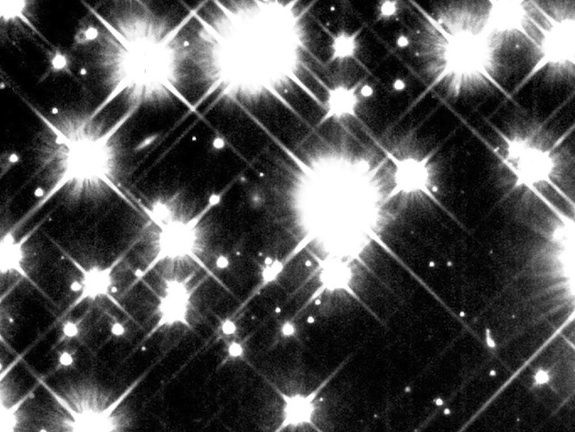E.T. Phone Home: New Research Could Detect Signs of Life in this Decade
Thanks to a proposal by astronomers Avi Loeb and Dan Maoz, we could find evidence of extraterrestrial life very soon
/https://tf-cmsv2-smithsonianmag-media.s3.amazonaws.com/filer/20130301093040Illustration-Thumb.jpg)
According to a new proposal from astronomers and professors Avi Loeb and Dan Maoz, signs of life may be awaiting detection in the shadows of death. Looking to the abundance of dying stars known as white dwarfs, Loeb and Maoz devised a simple way to search for oxygen in the atmosphere of exoplanets which orbit around white dwarfs much the way Earth orbits the sun. Loeb says the theory could yield results within the decade with the launch of NASA’s James Webb Telescope in 2018.
The pair published a paper in February, ”Detecting bio-markers in habitable-zone earths transiting white dwarfs,” outlining their theoretical research. In it, Loeb, chair of Harvard University’s department of Astronomy and director of the Institute for Theory and Computation (ITC) within the Harvard-Smithsonian Center for Astrophysics, explains that though a white dwarf is simply the cooling core of a dead star, its radiant heat and light can host life on orbiting planets for billions of years.
“We know of a few thousand of those planets by now and there must be many more out there. And a key question is, if a planet is quite similar to Earth in terms of its rocky material; and if it’s the right distance from the furnace, the central star that keeps it warm so that adequate water can exist on its surface; would the chemistry of life naturally arise, and would life exist the same way it does on Earth?” Loeb says it’s a difficult question to address with theory alone. “The best way to approach it,” he says, “would be to try and observe other planets, and search for indications of life.” And that rather than visiting those places, Loeb recommends searching “for signatures of molecules that are naturally produced by life and the most generic one is oxygen.”
Recent research suggests not only that there are plenty of exoplanets out there like our own, but that they are often paired with and orbiting white dwarfs. According to Loeb, “Somewhere between 15 to 30 percent of show evidence of rocky material on their surface, and such material would not be there unless there was rocky stuff around them,” meaning that these are the exoplanets that could potentially sustain life.

With this in mind, Loeb and Maoz postulated that researchers could find oxygen by measuring the atmospheric transmission spectrum of these planets as it passes in front of a white dwarf. Unfortunately, the pair will have to wait until 2018, when the launch of the James Webb Telescope is scheduled. The measurements have to be taken outside the Earth’s atmosphere, where oxygen concentrations can alter the incoming light.
In the meantime, Loeb plans to use the results of an upcoming survey of stars to identify prime candidates for the space telescope to measure. “One can follow up on the sample of white dwarfs that is found by this survey and search for examples of where we see evidence of a planet transiting a white dwarf and, if it’s the right distance, that would be a very good candidate for JWST to look at.”
The researchers estimate that a sample size of some 500 white dwarfs will be needed, to account for a variety of alignments between planets and their stars, but he’s optimistic about the potential to find something.
“I think if we have the technology, we should do it,” he says. “There are several examples in the history of astronomy where people hesitated.” Most recently, he says, researchers were not given observation time to search for exoplanets. “Even though it was feasible technologically, they said no we won’t give the time for that because it’s speculative and the chance is very small that there would be a Jupiter close to a star.” Of course, “only a decade later these Jupiters were found by chance, and it opened completely this field of exoplanets.”
Loeb, who sprinkles his lectures with talk of religion and philosophy, says the lesson is to remain open-minded. “The way to make discoveries is not to have a prejudice and just to explore the universe because our imagination is quite limited.”
In the end, Loeb says his proposal is actually simple, a hallmark of his approach to physics that has earned him a Chambliss Astronomical Writing Award from the American Astronomical Society for his book, “How Did the First Stars and Galaxies Form?“
/https://tf-cmsv2-smithsonianmag-media.s3.amazonaws.com/accounts/headshot/Leah-Binkovitz-240.jpg)
/https://tf-cmsv2-smithsonianmag-media.s3.amazonaws.com/accounts/headshot/Leah-Binkovitz-240.jpg)